There are few countries in the world in which women have experienced more sudden and shocking changes than in Iran. Throughout much of the 20th century, the Pahlavi monarchs tried to modernize Iranian women’s status along western lines by force. Following the Islamic Revolution of 1979, Ayatollah Khomeini and his followers invoked Islamic authority to impose severe legal and professional restrictions on women. But as historian Nina Ansary shows in her new book Jewels of Allah, these grand narratives leave out the actions of Iranian women themselves. Drawing on her research at Columbia University, Ansary has set out to show how Iranian women have long shaped their country’s history, and how they are changing the Islamic Republic today. IranWire spoke to Ansary by phone from New York.
The first time I flew to Tehran in 2008, I had a surreal first impression of the situation of women in Iran. The plane had taken off from Paris, and almost no one on it was wearing any kind of religious clothing. But as it descended to Tehran, there was a moment when suddenly all the women who weren’t veiled before started putting on headscarves and manteaus, because they were required to. The message it sent was that the authorities in Iran had succeeded in making women into visual symbols of their power. Do you think that’s true?
That is correct, in the sense that the way mainstream media depicts women in Iran, when they neglect the entire narrative, and just put forth a visual background image, that does convey that very message. But one of the stereotypes I'm trying to shatter is that behind the veil, and behind the image that the Islamic Republic is portraying, while women may be oppressed within the laws of the Islamic constitution, they are not oppressed internally, and they don't subscribe to this antiquated image of the Muslim woman.
You begin your book with a set of misconceptions you have encountered about women in Iran. Who expressed these misconceptions to you?
When I was rewriting my doctoral thesis as a mainstream book, I decided to go on social media, which was something I never had done before. I began to post, every Monday, Wednesday and Friday, a photo with a caption about an accomplished Iranian woman. This could be a woman during the Achaemenid era, or a woman in post-revolutionary Iran — any woman who had accomplished anything of significance during Iran's history, pre- and post-Islam. What I noticed, posting these women for the last year and a half, was how many people said, "We never knew. We just assumed that women, after the Khomeini regime took over, are really oppressed, in seclusion, behind the veil, and subservient.” I received most of my comments from my fan page, and reader comments gave me the sense that the real narrative has been neglected in mainstream media.
As part of your historical overview, you also look at how the last Shah, Mohammad Reza Pahlavi, portrayed himself as a champion of women. What do you think motivated him to elevate women’s legal status in Iran?
I know what motivated him, and I have these two quotes in my book. These are from 1962, when he launched his White Revolution. Women were not allowed to vote by the dynasties that came before the Shah, simply because they were lumped along with lunatics, and all those deprived of the right to vote. He says:
"How can a man give rights to himself, yet deprive his mother and his sister of the same rights? How can a man say that his mother, who has given him his very life, is in the same category as lunatics? This argument is against nature, humanity and civilization."
I think that sums it up. Another quote he gave at the same time was:
"I should personally like to see further advances in broadening the opportunities for our women, my aim being that our women should enjoy the same basic rights as men. If a woman wants to become a physicist, she should have the opportunity to do so, regardless of sex."
These really reflect his ideology regarding women.
When you describe the reforms of the Pahlavi era, you include a fascinating passage from Princess Ashraf, the Shah’s sister, about the challenges of enacting the 1967 Family Protection Act. She describes all the government’s attempts to dodge the likely objections of the Islamic clergy. So why did the act become a prime target for Iran’s revolutionaries in 1979?
Because those who subscribe to an antiquated or hardline interpretation of Islam felt and continue to feel that women should not be afforded the same rights as men. This is embedded in the Islamic constitution, as well as the Islamic retribution laws, which literally say a woman's life is worth half a man's, or a woman's testimony in court counts as half of a man's. Women were given the right to become judges during the Pahlavi era, and those rights were revoked post-revolution.
It's the irrational premise that women do not have the same intellectual capacity as men. That is what fuels the clergy, but not all clergy; there are progressive clergy in Iran who do not subscribe to this. This is the hardline mentality that would oppose the Family Protection Act, simply because they are beholden to the notion that women, as beings, have less capacity than men.
You write that in 1979, women from a wide range of backgrounds actually supported Khomeini. Why did he appeal to them?
Khomeini had a very vague rhetoric when it came to women. I always say that as women we have a responsibility to look beneath the surface, because Khomeini, decades earlier, in A Clarification of Questions, had actually embedded his vision of the role of women in an Islamic society.
What Khomeini did was to capitalize on a malaise, which was brewing for some time. That malaise stemmed from the largely traditional segment that did not subscribe to or understand the Shah's rapid, overnight motion towards a western lifestyle, meaning you were dealing with a population that felt that what the Shah and his father had done was a cultural violation.
Nobel laureate Shirin Ebadi, who was one of the first women to become a judge under the Shah, has explained why she also supported Khomeini. She felt that he represented more of the real Iran, and the essence of Iran, than the Shah had done. I quote her saying, "It took scarcely a month [after Khomeini landed] for me to realize that I had enthusiastically participated in my own demise.” So if an educated woman like Shirin Ebadi would fall for the vague rhetoric of Khomeini, that speaks volumes about what Khomeini was able to capitalize on.
Khomeini, of course, didn’t see himself as an oppressor of women. He always described Islamic laws — on matters from veiling to polygamy — as benefitting women. To what extent did women embrace his rationales?
I don't think that women in general, after he embedded the gender discriminatory laws, would subscribe. But this has taken me 300 pages to go through, meaning it's not that black and white. Initially, when Khomeini enforced the veil, it was endorsed by the majority of traditional women, and also allowed them to come out of their lair and go and get an education. A lot of traditional families were uncomfortable allowing their daughters to go to school in this westernized climate of the Pahlavi era. So the veil, initially, was a welcome alternative, and a welcome mandate by the majority of traditional women.
Today it no longer holds true. I actually cite Khomeini's own granddaughter, who has said she is sorry that the veil was enforced on women, because it has become a symbol of this regime, and a symbol of an oppressive atmosphere.
The other change was the reversion of elementary and high schools to single sex schools. That was also a very welcome alternative for women from traditional backgrounds. Again today, you have a society that does not, by and large, reflect the ideology of the ruling entity.
Since the revolution, some Iranian women have tried to advance their rights within the logic of Islamic theology, especially during the presidency of Mohammad Khatami. But Iran’s laws are made or overseen by male clerics, who claim to have the highest religious credentials. So can women really succeed by challenging clerics on their own territory?
Iran today has a highly educated population. The female population, specifically, is highly educated, and they actually surpass men percentage-wise in universities. These are women who want to maintain their religiosity, but are conflicted because they cannot maintain their religiosity in a religion that denies them their rights based on their gender. What these women have done is considered blasphemous by hardliners, but progressive factions feel that this is a very bold way of actually finding liberation from within the texts.
They have been able to demonstrate something really important, that everything has to be able to evolve and adapt to the changing needs of a 21st century society, meaning that which held centuries ago cannot be the finite word of God, and that Islam is able to evolve and adapt. This is very new, and when something is very new, it takes a while to gather momentum and take hold. Nevertheless, it's the beginning of something that may end up advancing women's rights in Muslim nations. That's a long road, but you have to start somewhere.
When you say clerics, Khatami is a cleric, and Khatami has written, "If religion goes against freedom, it will lose.” So it's not all clerics who are beholden to such ideological distinctions. I need to clarify that because there are many progressive clerics who actually believe in women's rights, who actually support this new trend, which is reinterpreting passages that are used to justify the denigration of women in Islam. The feminist movement in Iran gained momentum in the reformist era, which was the presidency of Mohammad Khatami. The supreme leader referred to many of the people under Khatami as "diseased people," simply because they reflected a more progressive religious ideology. So there is hope because not all clerics are beholden to antiquated visions of what a woman should be.
But to some extent those women are relying on male reformist clerics to advance their points within a kind of male racket, which is the clergy.
No one said it's an easy climb. It's an uphill battle, but the most important thing is that today the women's rights movement in Iran is a grassroots movement. It's fueled by both secular and traditional women, who have a common bond. Through their continued activism, women have been able to partially reverse and amend some discriminatory laws. That's the very important premise.
Women can now serve as what is called investigative or research judges. That may not mean much to you or me being on the outside, but that's a huge step, one more step to maybe, hopefully, getting women to be able to serve as judges one day. It’s really a feat for women in Iran. Unmarried women were also able to get permission to study abroad. Before they weren't allowed to. In 2006, a group of Iranian women's rights activists, including Shirin Ebadi, started the One Million Signatures campaign for equality. Some of the results of the campaign were that it successfully pressured parliament to amend the inheritance law in 2008, giving women the right to inherit their husbands' property. Also in 2008, women were granted the right to equal blood money, but only in accidents covered by insurance companies. That doesn't sound like much, but it's better than nothing. They were able to pressure parliament to prevent passage of laws enabling men to take additional wives without the consent of the first wife. These are some of the many, painstaking, partial amendments that women have been able to make through their activism.
Much of the history you describe touches on current events. For example, you mention the dramatic changes in family planning that Iran introduced in the 1980s, which caused population growth to decline substantially from the late 1980s to the early 1990s. In 2012, Supreme Leader Ali Khamenei announced that that had been a terrible mistake. What do you think has caused Khamenei’s newfound interest in increasing birth rates?
For women in Iran, one way of maintaining their autonomy is not getting married. Once you get married, there are a lot of obstacles that come in your way. You are hailed by hardline clerics as mothers and wives, yet you are discriminated against in the laws that resolve custody cases, or you are not allowed to leave the country without your husband's written consent. Another way is, women are not having children. Iran has had one of the highest fertility declines in the Middle East and North Africa in the last decade alone.
What Khamenei is trying to do — and he actually just recently considered a ban on contraception and vasectomies — is to hail the Iranian woman as a wife and mother. You can only force an ideological vision for so long if people are not beholden to it. You can ban contraception, but you can't force women to have children. Women in Iran don't reflect his vision, and it's a push-pull dynamic that reflects an irrational way of looking at a woman as a procreator who is subservient to her husband, and there to be a primary caregiver.
And what have been the consequences so far?
Who is bearing a high price for all this? Women. Women's rights activists. The artist Atena Farghadani did a satirical cartoon mocking the supreme leader's consideration of banning vasectomies, and limiting access to contraception. She has gotten a 12- and-a-half year sentence. You are talking about a country where ex-president Akbar Hashemi Rafsanjani's daughter Faizeh just served six months in Evin Prison for her peaceful activism promoting gender equality. These are women who pay a high price, come out, and continue their activism. In fact Faizeh Hashemi upon her release said that her incarceration will not prevent her, nor deter her, from continuing her activism. What is amazing is their resilience and their courage.
President Hassan Rouhani has made repeated statements about increasing opportunities for women and ending discrimination against women. Meanwhile, the UN special rapporteur for human rights in Iran says the situation of women has worsened during Rouhani’s presidency. What do you think Rouhani will deliver?
The president in Iran is severely handicapped by the supreme leader. So on one side you have president Rouhani who says that women should enjoy equal rights, but on the other, you have the supreme leader who comes out against them and says that gender equality is one of the West's biggest misconceptions, or is a fallacy. It's very difficult to navigate and go down a road where you are consistently being blocked by the powers that be. I know that there have been countless women's rights activists, even, I think, one of the highest numbers during Rouhani's time. I can only take what Rouhani says on the surface and say that he appears to be a more progressive cleric who is looking for ways to bring Iran somewhat out of isolation with this nuclear agreement.
I was surprised to read your conclusion that Iranian women could be an “instrumental force” in effecting the dissolution of the Islamic Republic. The Islamic Republic has been around for 36 years now, and it looks like a survivor. What makes you think it could dissolve?
Don't forget that women were one of the biggest contributors to the collapse of the Pahlavi Monarchy. And this was at a time when women were not educated. When the Shah left Iran, approximately 35 percent of the female population was educated. Today that's over 80 percent. During the monarchy, there was the absence of what would be considered a viable feminist movement in Iran. Although women were given rights, those rights were not earned; they were bestowed from above. That is not, by definition, a women's rights movement. So what has happened in post-revolutionary Iran is that, during a most unexpected time, there is actually a vibrant and ongoing feminist movement. They have made certain strides though their activism. What I mean to say by that is, if there is going to be any change, or a trend toward a more progressive atmosphere, I think the main push will come from women.
Related articles:
visit the accountability section
In this section of Iran Wire, you can contact the officials and launch your campaign for various problems

















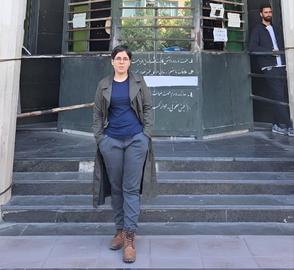
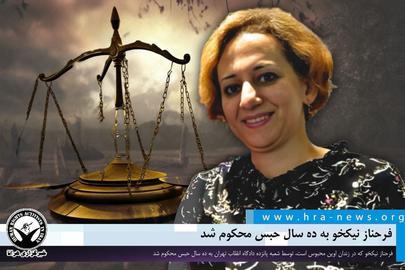
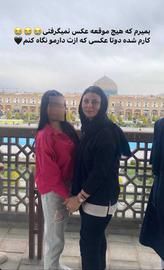

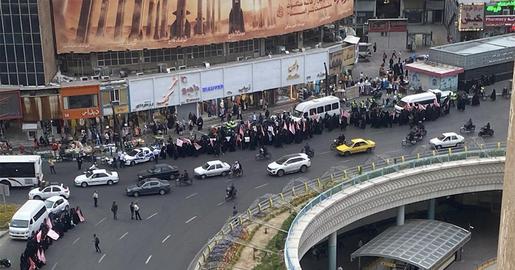
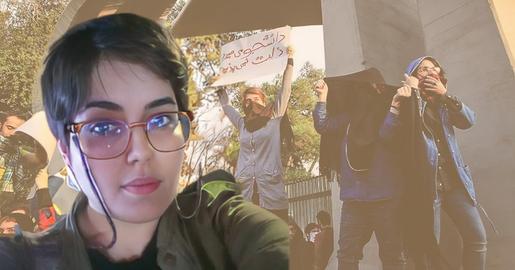



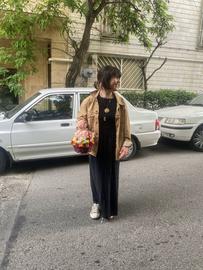
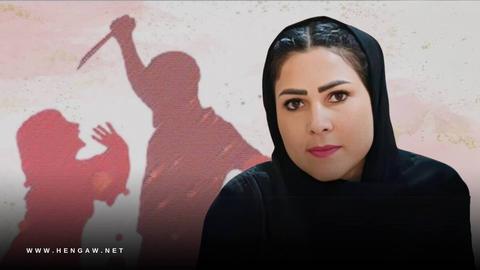




comments